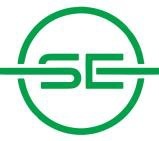Motor Management Systems
Motor Management Systems (MMS) are advanced solutions designed to monitor, control,
and protect electric motors in industrial and commercial environments. These systems
integrate multiple functions such as protection, diagnostics, communication, and
control into a single, compact unit.
By continuously monitoring motor parameters like current, voltage, power factor, and
temperature, MMS helps optimize performance, reduce energy consumption, and prevent
unexpected failures. These systems are essential for predictive maintenance and
improving overall operational efficiency.
Benefits With Our Motor Management Systems
Smart, integrated motor protection and performance optimization in one
solution.
-
Real-time monitoring and diagnostics for enhanced reliability
-
Protection against overload, phase imbalance, and locked rotor
-
Communication-ready (Modbus, Profibus, Ethernet) for system integration
Our Motor Management Systems comply with global standards such as IEC 60947 and IEC
61850, and are available in modular or fully integrated formats. These systems are
ideal for use in process industries, water treatment plants, HVAC systems, and smart
manufacturing environments—ensuring intelligent motor control with reduced downtime.
Most Common Questions
Why choose a Motor Management System over traditional protection devices? MMS offers
comprehensive insight, automation, and control in one package. It combines
protection, energy efficiency, and predictive maintenance to maximize motor uptime
and productivity in complex operations.




